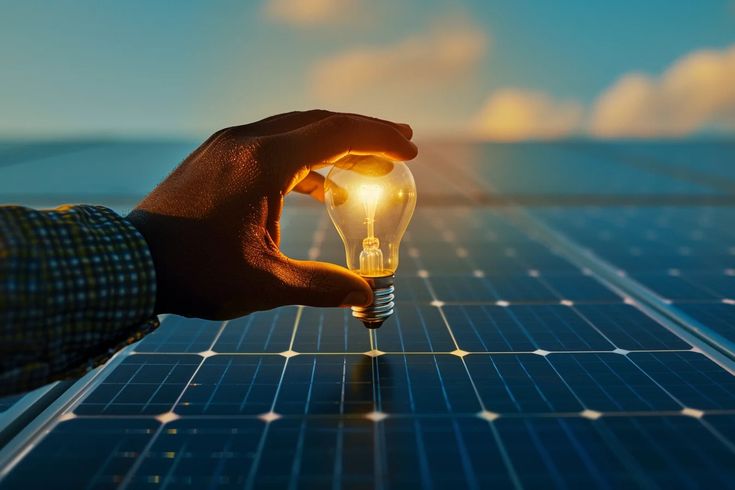The global power grid is undergoing a monumental transformation, shifting from a centralized, fossil-fuel-dependent model to a dynamic, decentralized system increasingly powered by intermittent renewable energy sources like solar and wind. At the heart of this revolution are energy storage solutions , acting as the vital bridge between fluctuating supply and consistent demand. In 2025, these technologies are more critical than ever, offering unprecedented flexibility, resilience, and efficiency to power systems worldwide.
Why Energy Storage is a Game-Changer for the Grid
The integration of robust energy storage systems delivers a multitude of benefits that are essential for modernizing our power infrastructure:
- Renewable Energy Integration: The sun doesn’t always shine, and the wind doesn’t always blow. Energy storage captures surplus electricity generated during peak renewable output and releases it when needed, smoothing out intermittency and enabling higher penetration of clean energy into the grid.
- Grid Stability and Reliability: Storage systems provide essential “ancillary services” like frequency regulation and voltage support. They can respond almost instantaneously to changes in supply and demand, preventing imbalances that could lead to blackouts and brownouts.
- Peak Shaving and Load Leveling: By storing low-cost off-peak power and discharging it during high-demand, high-price periods, energy storage reduces peak electricity prices and defers the need for costly upgrades to transmission and distribution infrastructure.
- Enhanced Resilience: During grid outages caused by extreme weather or equipment failures, energy storage systems can provide backup power, creating “microgrids” that can operate autonomously and ensure power to critical facilities or entire communities.
- Reduced Operational Costs: Storage can optimize the use of existing generation assets and transmission lines, reducing overall system operating costs. It can also displace less efficient or more polluting “peaker plants” that historically met sudden demand surges.
- Electrification Enablement: As sectors like transportation (Electric Vehicles) and industry electrify, energy storage plays a crucial role in ensuring the grid can handle increased loads and provide reliable charging infrastructure.
Top Energy Storage Solutions Leading the Charge in 2025
While research continues into a vast array of storage technologies, several solutions are dominating the market and driving grid transformation this year:
- Battery Energy Storage Systems (BESS) – The Dominant Force:
- Lithium-ion Batteries (Li-ion): Still the most prevalent technology for grid-scale storage, driven by falling costs (especially with the rise of Electric Vehicles) and continuous improvements in energy density and cycle life.
- LFP (Lithium Iron Phosphate) Chemistry: Rapidly gaining market share due to its superior safety profile (less prone to thermal runaway), longer lifespan, and continued cost reductions. In 2025, LFP is becoming the preferred choice for many grid applications.
- Advanced Li-ion Variants: Research into chemistries like lithium-sulfur, lithium-air, and solid-state lithium-ion batteries promises even higher energy densities and enhanced safety in the coming years.
- Applications: Ideal for short-to-medium duration storage (4-8 hours), frequency regulation, peak shaving, and providing rapid response services.
- Lithium-ion Batteries (Li-ion): Still the most prevalent technology for grid-scale storage, driven by falling costs (especially with the rise of Electric Vehicles) and continuous improvements in energy density and cycle life.
- Flow Batteries – The Long-Duration Contenders:
- How They Work: Unlike Li-ion batteries where energy is stored within the electrode material, flow batteries store energy in liquid electrolytes contained in external tanks. Power output is determined by the stack size, while energy capacity is determined by the volume of the electrolyte tanks, allowing for independent scaling.
- Advantages: Excellent for long-duration discharge (6-100+ hours), extremely long cycle life (minimal degradation over thousands of cycles), non-flammable, and easily scalable. Vanadium redox flow batteries (VRFBs) are the most commercially mature.
- Applications: Increasingly being deployed for multi-hour and multi-day storage, reducing reliance on fossil fuel peaker plants, and providing consistent power from renewables.
- Green Hydrogen – The Ultimate Long-Duration, Seasonal Storage:
- How It Works: Excess renewable electricity is used to split water into hydrogen and oxygen through electrolysis (“green hydrogen”). The hydrogen can then be stored for extended periods (weeks, months, even seasons) and later converted back into electricity via fuel cells or used directly as a clean fuel in various sectors.
- Advantages: Unlimited storage duration, high energy density, and versatility (can be used for power, transport, or industrial processes).
- Applications: While round-trip efficiency is currently lower than batteries, hydrogen is emerging as a critical solution for very long-duration and seasonal energy storage, decarbonizing hard-to-electrify sectors, and providing grid backup when other renewables are unavailable.
- Advanced Thermal Energy Storage (TES):
- How It Works: Stores energy in the form of heat or cold, often using materials like molten salt, phase-change materials (PCMs), or chilled water. This stored thermal energy can then be used directly for heating/cooling or converted back into electricity (e.g., in concentrated solar power plants).
- Advantages: Long duration, cost-effective for large-scale applications, and uses readily available materials.
- Applications: Primarily used to extend the operational hours of concentrated solar power (CSP) plants, but also for district heating/cooling systems and industrial processes.
- Mechanical Storage (Evolving Technologies):
- Pumped Hydro Storage (PHS): The most mature and largest form of grid storage globally. Water is pumped uphill to a reservoir using excess electricity and released downhill through turbines to generate power when needed. Siting limitations restrict new large-scale projects.
- Compressed Air Energy Storage (CAES): Stores energy by compressing air and holding it in underground caverns or tanks. When needed, the air is released to power turbines. Modern CAES systems are improving efficiency with advanced designs.
- Gravity-Based Storage (Emerging): Innovative systems that lift heavy weights (e.g., concrete blocks) using excess electricity and then lower them to generate power. These are gaining traction for niche applications.
- Flywheels: Store energy as kinetic energy in a rapidly spinning rotor. Excellent for very short-duration, high-power applications like frequency regulation and grid stabilization.
The Future Grid: A Symphony of Storage
In 2025 and beyond, the power grid won’t rely on a single storage solution. Instead, it will leverage a diverse portfolio of technologies, each optimized for different durations and services. Short-duration batteries will handle rapid fluctuations, long-duration flow batteries will bridge daily cycles, and green hydrogen will provide seasonal and multi-day reserves.
This synergistic approach, coupled with advanced grid management systems powered by AI and digital twins, is fundamental to building a resilient, efficient, and truly sustainable power grid capable of handling a future dominated by clean, and truly sustainable power grid capable of handling a future dominated by clean, renewable energy. The era of energy storage is here, and it’s transforming our world.





